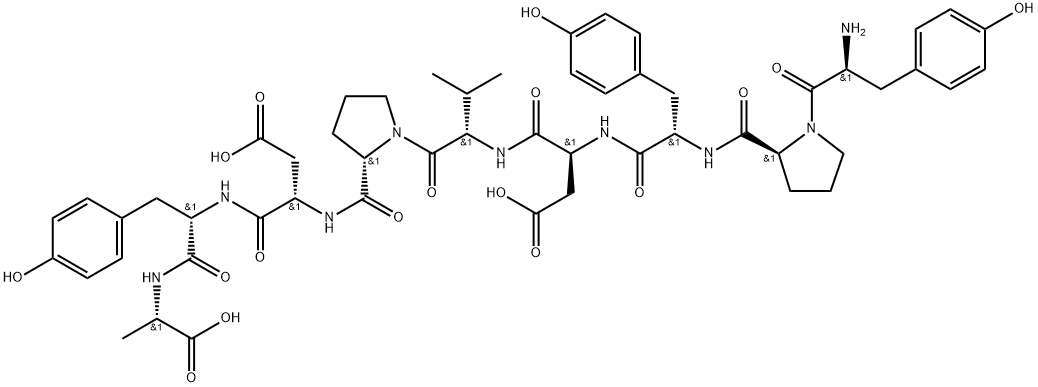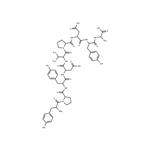Influenza Hemagglutinin (HA) Peptide may be used in immunoblotting. It may also be used to to elute HA-tagged fusion proteins from an affinity column of Monoclonal Anti-HA agarose.
ChEBI: HA peptide is a nine amino acid peptide with sequence YPYDVPDYA derived from an epitope of the influenza hemagglutinin protein. It is extensively used as an epitope tag on recombinant proteins to facilitate their isolation, purification, and detection.
Influenza Hemagglutinin (HA) peptide is a synthetic peptide with an amino acid sequence of N-Tyr-Pro-Tyr-Asp-Val-Pro-Asp-Tyr-Ala-C. This corresponds to amino acids 98-106 of the human influenza virus hemagglutinin. The HA Peptide is used for competing out the anti-HA antibody binding to HA-tagged fusion proteins in immunoassays. The successful inhibition of antibody binding by HA peptide demonstrates binding is specific.
ha tag,complexes containing plasmid dna, transferrin-polylysine conjugates, and polylysine-conjugated peptides derived from the n-terminal sequence of the influenza virus hemagglutinin subunit ha-2 have been used for the transfer of luciferase or -galactosidase marker genes to k562 cells, hela cells, and bnl cl.2 hepatocytes. the presence of these influenza peptide conjugates in the dna complexes renders the complexes active in membrane disruption in a liposome leakage assay and results in a substantial augmentation of the transferrin-polylysine-mediated gene transfer.fusogenic peptides derived from the n-terminal sequence of the influenza virus hemagglutinin subunit ha-2 is part of the dna complexes and the resulting augmentation of gene transfer to cultured cells1.in the influenza virus, the hemagglutinin (ha) protein mediates both binding of the virus to the cell surface and the subsequent fusion of viral and cellular membranes. ha is composed of a receptor-binding subunit, denoted ha1, and a fusogenic subunit, denoted ha2. the native ha1yha2 complex, as found on the surface of the native virus, is fusioninactive. for influenza virus, membrane fusion is regulated by the conformational state of the hemagglutinin (ha) protein, which switches from a native (nonfusogenic) structure to a fusion-active (fusogenic) conformation when exposed to the acidic environment of the cellular endosome. the native structure of ha is trapped in a metastable state and that the fusogenic conformation is released by destabilization of native structure2.
1. e. wagner, c. plank et al, influenza virus hemagglutinin ha-2 n-terminal fusogenic peptides augment gene transfer by transferrin-polylysine-dna complexes: toward a synthetic virus-like gene-transfer vehicle. proc. nati. acad. sci. usa vol. 89, pp. 7934-7938, september 1992 2. c. m. carr, c. chaudhry, p. s. kim et al. influenza hemagglutinin is spring-loaded by a metastable native conformation. proc. natl. acad. sci. usa vol. 94, pp. 14306–14313


